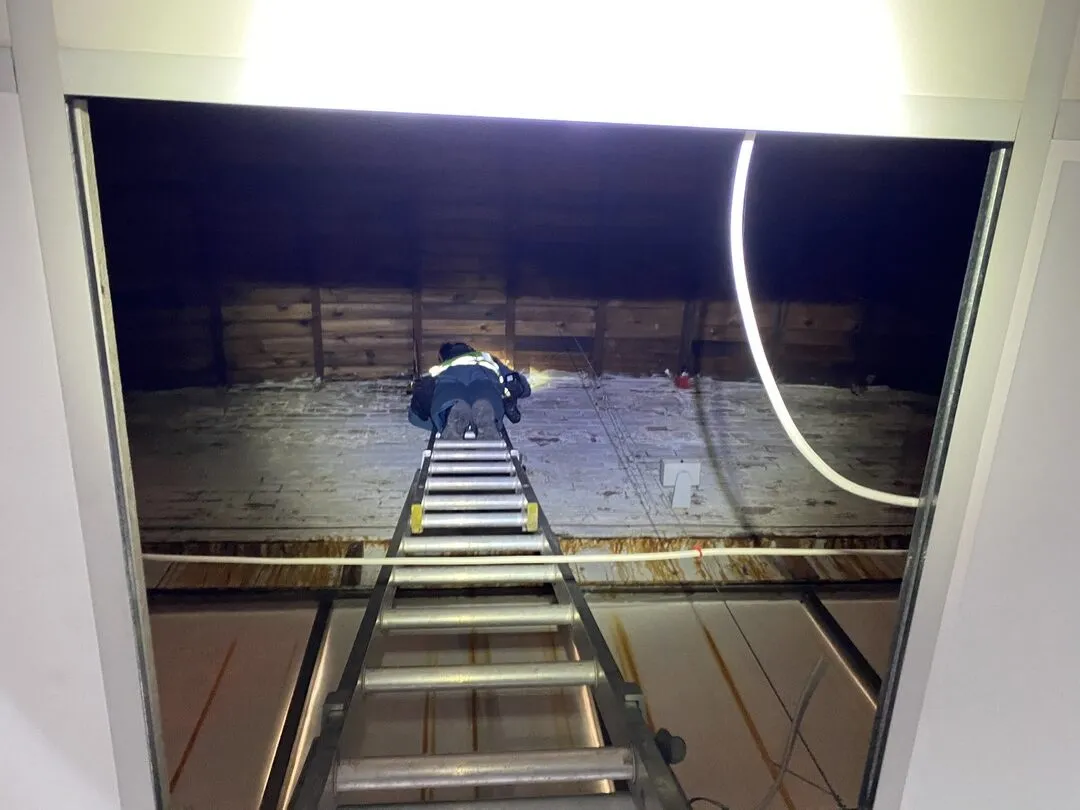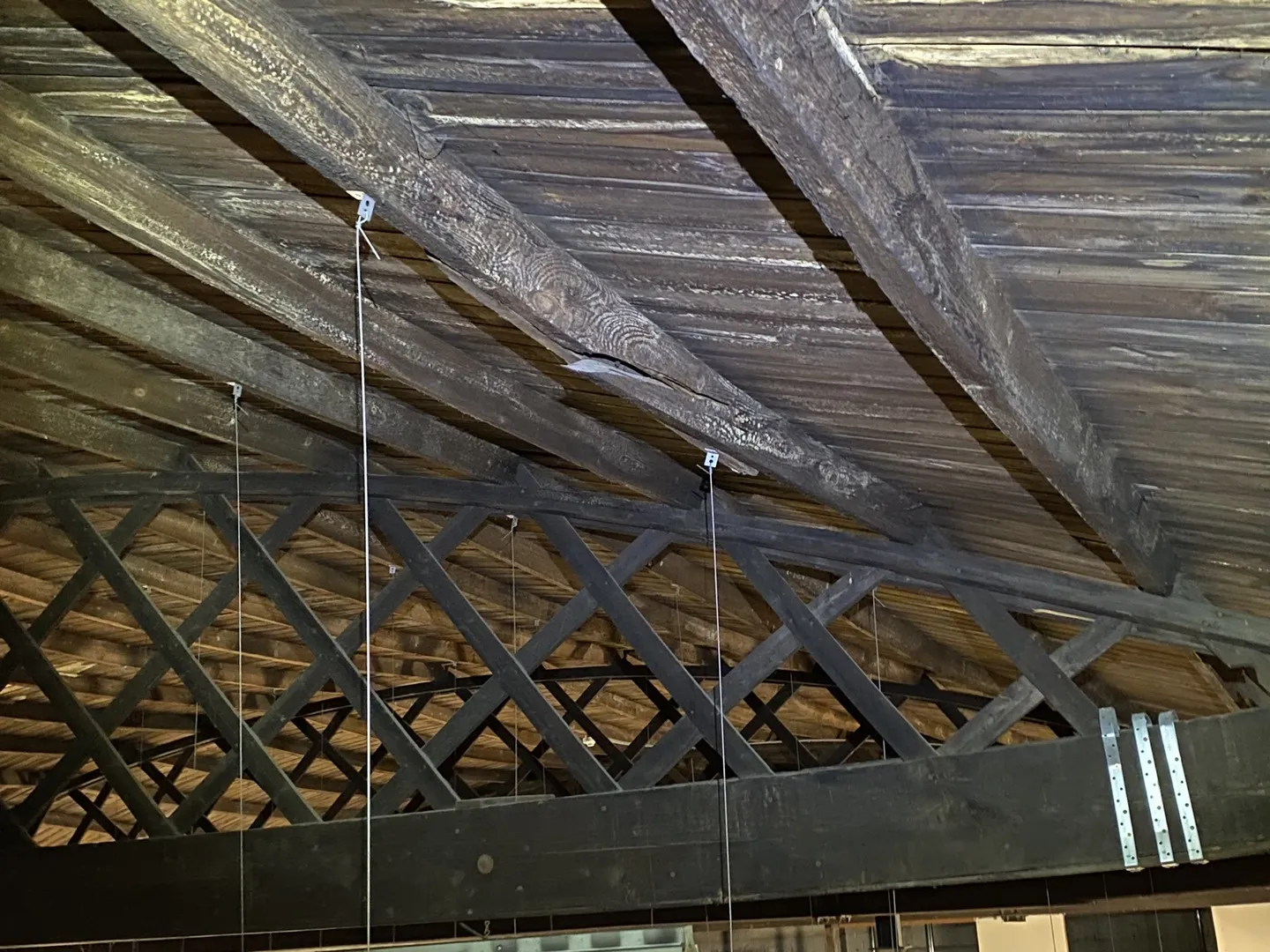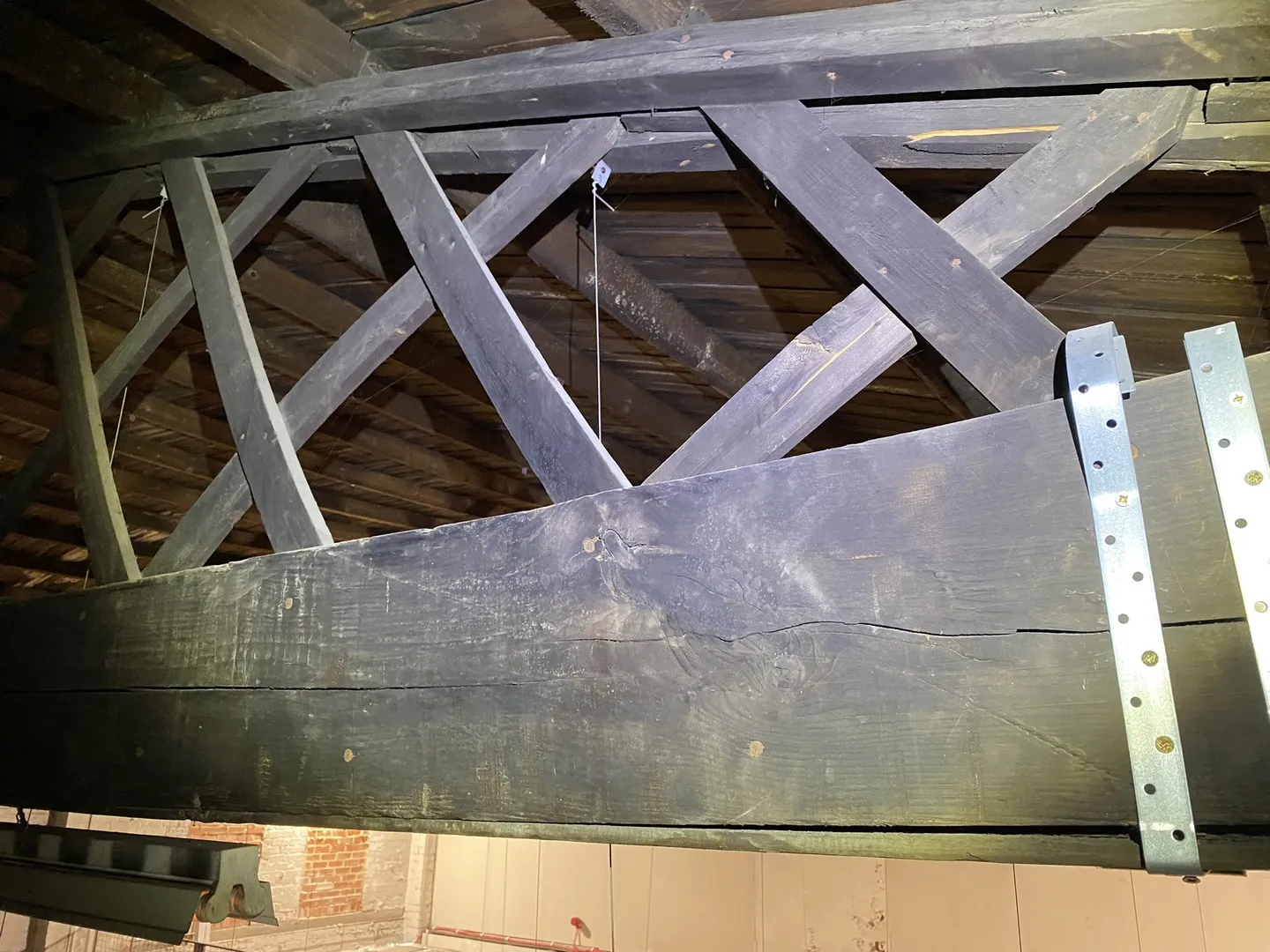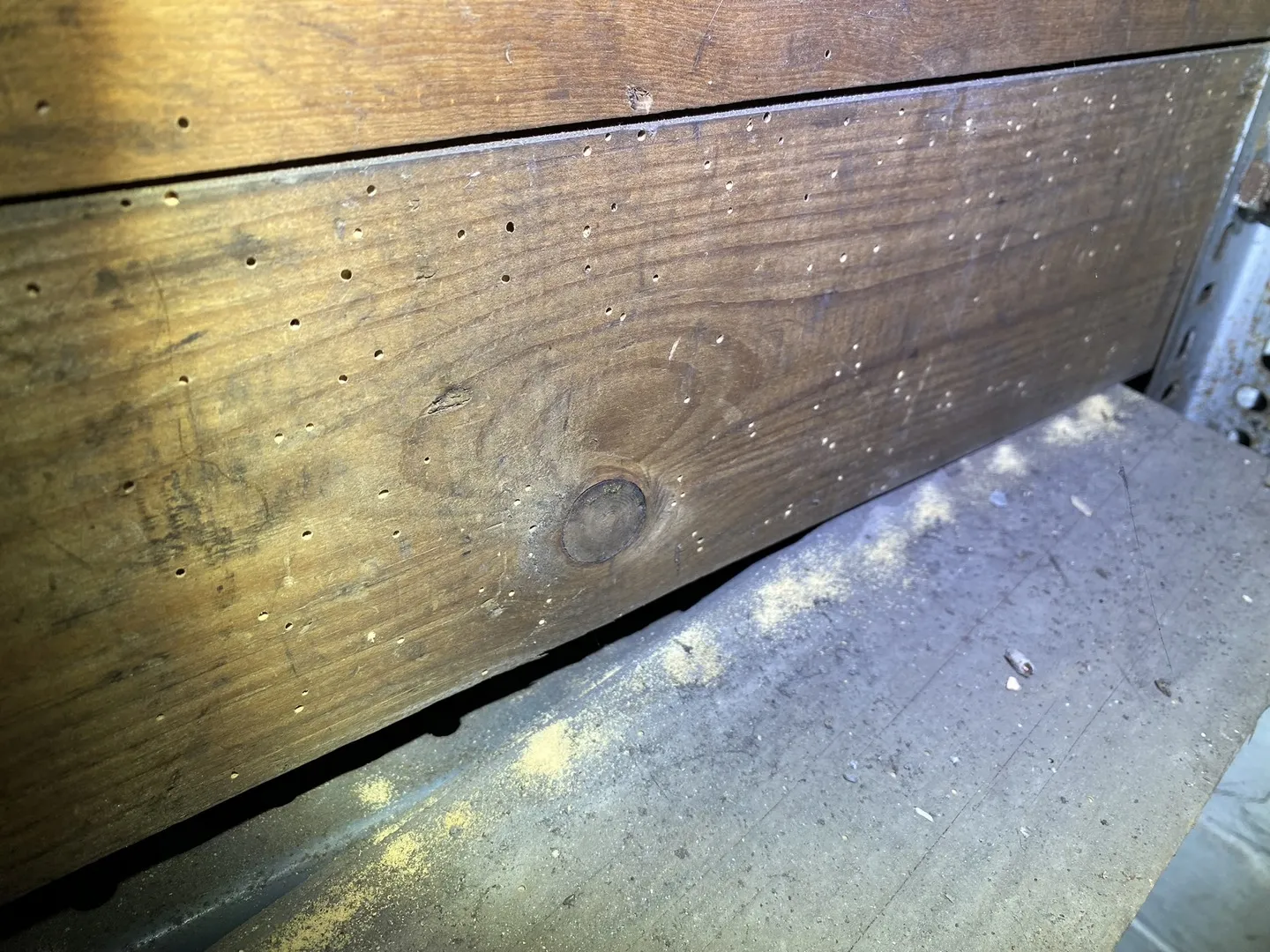‘Belfast’ roof truss, Yeadon
The Problem
H+R were instructed to undertake an updated timber condition survey of the roof structure over the bathroom showroom of a leading UK plumbing merchant following an earlier survey 6 years previously.
The building which was understood to date from the 1920-30s had a barrel-vaulted roof which employed the ‘Belfast’ truss for support. This design of truss was introduced in 1866 by McTear & Co., a firm of Belfast roofing-felt makers, to meet the demand for efficient clear span industrial buildings, brought about by the industrial revolution. The trusses were fabricated entirely of short lengths of modest section size softwood timber and were of bow-string configuration with a curved top chord, straight horizontal bottom chord and close-spaced latticed web. The roof deck was constructed of sarking boards supported by purlins. The use of this lightweight design was only made possible following the development of bituminous roofing felts for sheathing in the early 19th century which significantly reduced the dead load compared to traditional roof coverings.
The ‘Belfast’ truss was employed extensively throughout Ireland and Great Britain in the late 19th Century and into the beginning of the 20th Century when there was a demand for even wider span roofs for shipbuilding and aircraft hangers. There is no definitive information about the origin of the building at Yeadon but it is believed to have originally been occupied by a haulage/carrier company who would have benefited from the high clear-spans.
Read more

The Solution
Temporary recommendations for propping and improved racking resistance were provided by H+R along with strategies for further detailed investigations and permanent repairs as part of a wider redevelopment of the building.
No chemical treatments were recommended for the common furniture beetle infestation. Instead, the re-opening of bricked-up windows above the height of the suspended ceiling was advised. This intervention would provide valuable daylight, thermal gain and natural ventilation that would significantly alter the internal environment making it less favorable to common furniture beetle.
Case Study Gallery






